Articles and Features
The Strength in Vulnerability, the Beauty in Transition, and the Necessity of Change.
Rineke Dijkstra’s Portraits
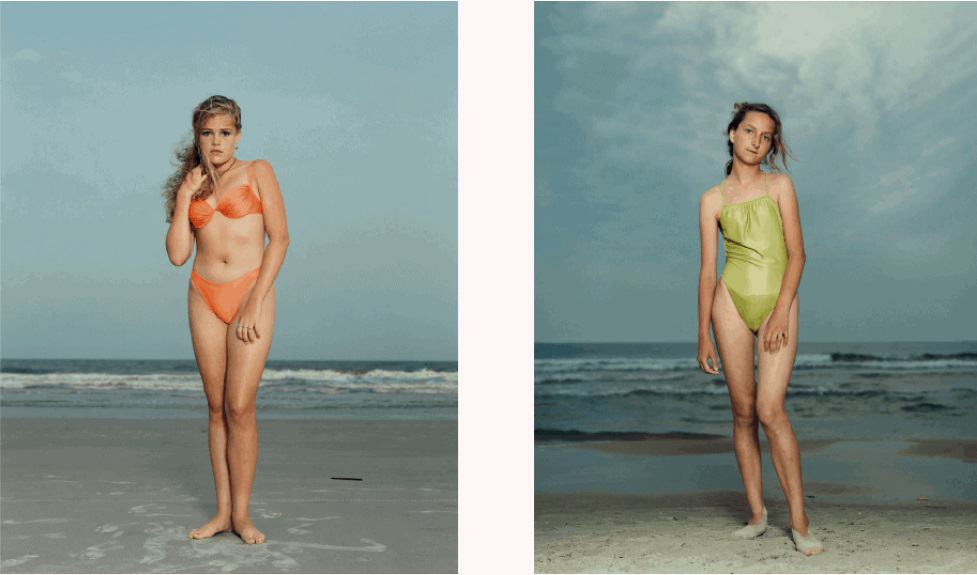
By Shira Wolfe
“Chance plays an important role in a photo, because you can never fully control everything. I embrace that coincidence.”
Rineke Dijkstra
In October 2020, Dutch photographer Rineke Dijkstra (b. 1959) received the prestigious Dutch award for the arts, the Johannes Vermeer Prize 2020. Dijkstra studied at the Gerrit Rietveld Academy in Amsterdam in the 1980s, and began shooting portraits in the late ‘80s, starting out with portrait commissions for newspapers and magazines.
She broke through in the 1990s with her Beach Portraits series, in which she captured incredibly moving, revealing photographs of children, pre-teens and teenagers on the beach. Dijkstra’s photographs and video works offer a contemporary take on the genre of portraiture. She possesses that particular skill, talent and distinctive style as an artist that makes her photographs instantly recognisable as Rineke Dijkstra images.
For decades, Dijkstra has worked with a 4×5 inch field camera and tripod, producing negatives the size of postcards, with sharp detail and contrast. Her use of natural daylight combined with a Lumedyne flash is extremely important in her images, which become, in her words, almost more real than reality. Dijkstra’s experience is that shooting with a 4×5 inch analog camera demands a lot of concentration and time, both from the photographer and the subject; a process that can come to relax the subject after some time, as they know it will be a longer process. The camera also makes people feel special.
Interested in capturing people in transitional stages, Dijkstra photographs her subjects set against a neutral background to direct the attention towards the person and all the processes they are going through. The result is an honest and intimate depiction of youthful awkwardness, coming of age, development of identity, and human change.
“The vulnerability of these young adults, either aware of their appearance, or not at all, and the intimacy that Dijkstra manages to achieve, characterize her entire oeuvre. Just as her exceptional antenna for not only the eyes or the face, but the entire body as the mirror of the soul.”
Johannes Vermeer Prijs 2020 jury
Beach Portraits Series
Wishing to create photographs that went deeper than what she was commissioned to do for the various publications she worked for, Dijkstra’s new direction came following a bicycle accident in 1990, which left her bedridden with a broken hip for months. She then had to start a rehabilitation process, which included 30 laps of swimming every day. One day, at the end of her swimming session, she decided to take a self-portrait in the swimming pool. Capturing herself in this state of utter exhaustion, too tired to strike a pose, this picture became a key element in the development of her new direction: she wanted to capture a truthfulness about her subjects, to reveal the essence of people through the dedicated focus on their figures set against minimal backdrops. What followed was her Beach Portraits series, shot at various beaches around the world.
Dijkstra was attracted to the backdrop of the sea, comparing it to a sort of studio backdrop which is similar everywhere, but never quite the same – depending on the weather, time of day, and location. Two of her most iconic photographs from this series are Hilton Head Island, S.C., USA, June 22, 1992 and Kolobrzeg, Poland, July 26, 1992. She had first taken photographs in the United States, then wished to travel to Poland to explore the contrasts between these countries, Poland just coming out of Communism. The differences couldn’t be bigger, yet these two portraits seem to belong together as two sides of the same coin, both frequently compared to Botticelli’s The Birth of Venus (1485-86). While the American girl actually asked Dijkstra to take her picture and then self-consciously struck several poses, the Polish girl was shy and initially didn’t want to be photographed. Yet both pictures brilliantly reveal the development from childhood to womanhood and the awkward self-awareness of adolescence.
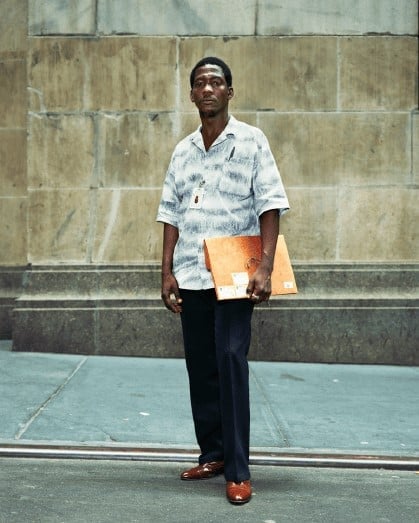
Courtesy of the artist and Marian Goodman Gallery. © Rineke Dijkstra
Streets Series
While working on the Beach Portraits, Dijkstra also made a small group of works in urban neighbourhoods called Streets, including images of people on Wall Street in New York City and in Odessa, Ukraine. Instead of the horizon made up from the sand and sea, the horizon in these pictures is the sidewalk and the walls of the city. Engaging her subjects directly, Dijkstra moves away from the classic approach of street photography. In doing so, she asks her subjects to confront the camera and enters into a direct dialogue with them. In one of these photographs, Wall Street, New York, June 29, 1993, we see a man carrying a portfolio, a tired yet defiant look on his face which speaks volumes about working life in New York.
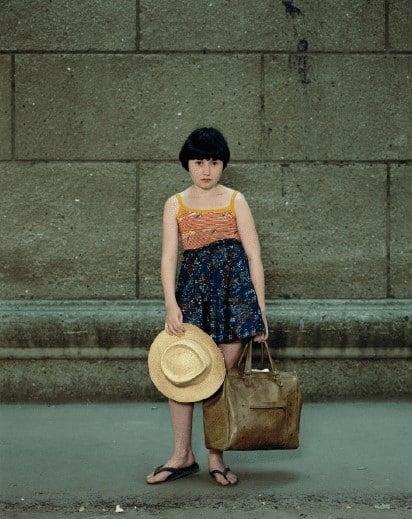
Courtesy of the artist and Marian Goodman Gallery. © Rineke Dijkstra
Another image from the series, Odessa, Ukraine, August 10, 1993, captures a little girl on the street in Odessa holding a straw hat and leather weekend bag in her hands. Though she can’t be more than 10 years old, her bold gaze and pose already betray her future as a woman.
New Mothers series
In her New Mothers series from 1994, Dijkstra set out to investigate whether it was possible to capture opposite emotions in a single image. She photographed mothers in their most intimate moments, right after the intensely physical and emotional experience of giving birth. Pain and exhaustion contrast with relief and euphoria. In the Netherlands, many women opt for home births, so Dijkstra got the opportunity to photograph some women in their homes, with their newborn babies in their arms, right after the birth. According to Dijkstra, there’s a rawness about childbirth, and this tension and pain remain in the photographs. On the photograph Julie, Den Haag, Netherlands, February 29, 1994, Julie is standing in her home against the backdrop of a white wall, clutching her newborn baby to her chest, looking at once bewildered, surprised, at peace, blissful, relieved and proud; an emotional complexity so masterfully captured by the artist.
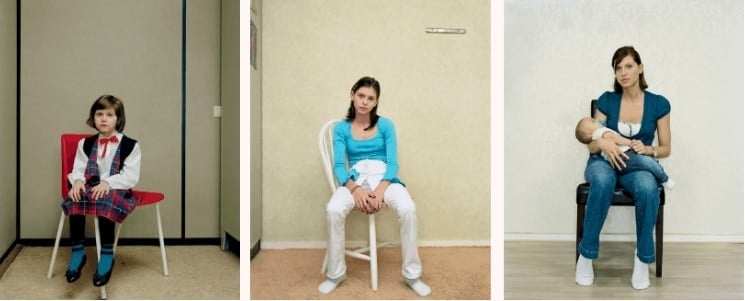
Ongoing Studies of Individuals
Besides her single portraits of subjects she spontaneously encounters around the world, Dijkstra is also involved in several ongoing studies of individuals, which reveal her fascination for the development of people as they grow older, and move from childhood through adolescence to adulthood. In 1994, she began photographing Almerisa, a young Bosnian refugee girl in the Netherlands and has continued to meet with her over the years, capturing her first as a young girl looking bluntly into the camera, later as a self-conscious girl going through puberty, then as a pregnant woman, and finally as a mother holding her newborn baby in her arms.
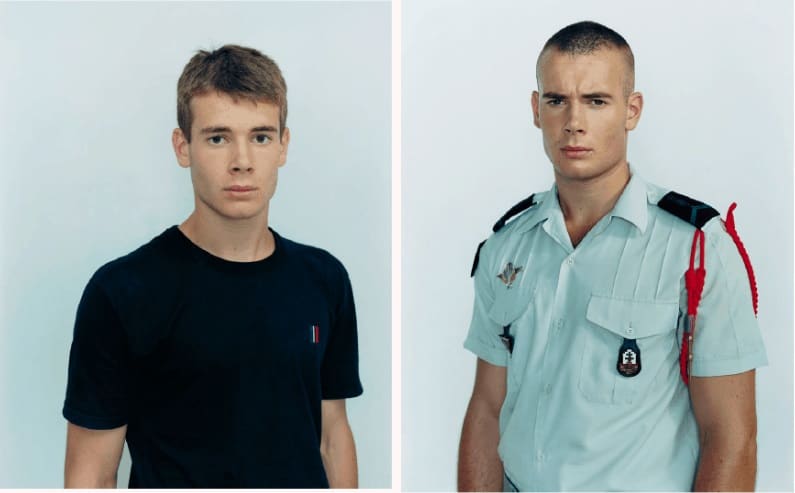
Another ongoing portrait series is that of the French Olivier, whom Dijkstra first photographed when he was 17, just minutes after he had been accepted into the French Foreign Legion. She continued to photograph him in various stages and locations throughout the first three years of his service (2000-2003), from Aubagne, where he was stationed for basic training, to postings in Gabon, the Ivory Coast, and Djibouti. She has noted how composed he always was, yet the photographs reveal subtle changes as Olivier grows up and moves through his experiences in the Foreign Legion. In a conversation with the San Francisco Museum of Modern Art from 2012, Dijkstra explains: “Olivier always looks like he has everything under control. I wanted to photograph him right after exercise, hoping he might be less concentrated on the fact that he was posing, to catch him less composed, but he seems never to let down his guard – not that he is hiding anything, just that he reveals so little.” Olivier himself described how he could see his development towards maturity in the photographs, as well as how his opinion of the Foreign Legion altered over time, gradually dissolving the dream he had once had about it.
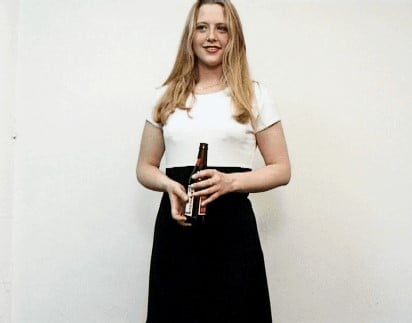
The Buzz Club, Liverpool, UK / Mystery World, Zaandam, NL
After visiting a club in Liverpool, Dijkstra became fascinated by the experiences and behaviour of the teenagers that came to party and let go here. She set up an improvised studio in a back room of the club, creating a series of still photographs of club-goers. This inspired her to create her first video work, The Buzz Club, Liverpool, UK / Mystery World, Zaandam, NL (1996-97). Again created in a makeshift studio in these clubs, Dijkstra invited teenagers in front of the camera, standing against a white background with the music audible in the background.
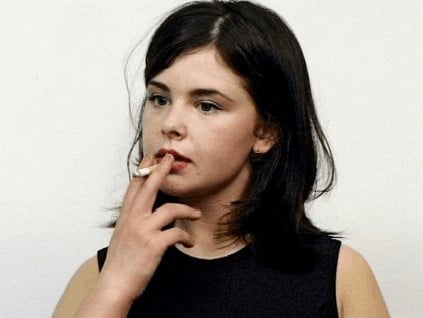
two-channel video installation, with sound, 26 min. 40 sec., looped. Courtesy of the artist and Marian Goodman Gallery. © Rineke Dijkstra
Some stand around, drinking, smoking, others are dancing. She takes the time for each subject, allowing viewers to get to know the subtle traits that make up each person, and to feel this teenage discomfort mixed with elation, freedom, confusion and pride. The result is a sensitive and touching portrait of youth.
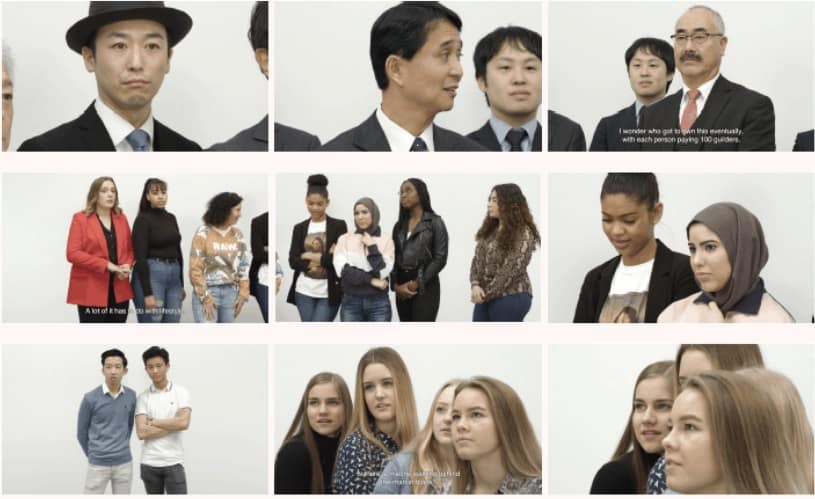
Night Watching
In her most recent video work, Night Watching (2019), Dijkstra, whose portraiture has been compared to that of 17th century Dutch masters such as Rembrandt and Vermeer, explores the effect Rembrandt’s most famous painting, The Night Watch (1642), has on people. Her video installation shows the faces and discussions of 14 different groups of people, ranging from schoolchildren to businessmen, who are looking at The Night Watch in the Rijksmuseum. The installation was presented in the Rijksmuseum’s Gallery of Honour as a triptych. Only the varied expressions and experiences of the viewers are visible – The Night Watch itself is never in the picture. With this film, Dijkstra in a sense continues in a direction she began to explore in 2009 with her video work I See a Woman Crying (2009), in which we see a group of English schoolchildren looking at Picasso’s Weeping Woman (1937).
Rineke Dijkstra’s photographic and video works ultimately confront human beings with each other’s vast particularity, beauty, and complexity. The works examine the mystery of the human connection, the moments of getting to know each other, connecting, and then again realising that there will always be parts of the other that remain just out of reach to us. Perhaps most importantly, they help remind us of the strength in vulnerability, the beauty in transition, and the inescapable necessity of change.
Relevant sources to learn more
Marian Goodman Gallery
Max Hetzler Gallery
Stedelijk Museum Amsterdam
For other Artland articles about exceptional photographers, see:
Ed van der Elsken
Graciela Iturbide
Ming Smith